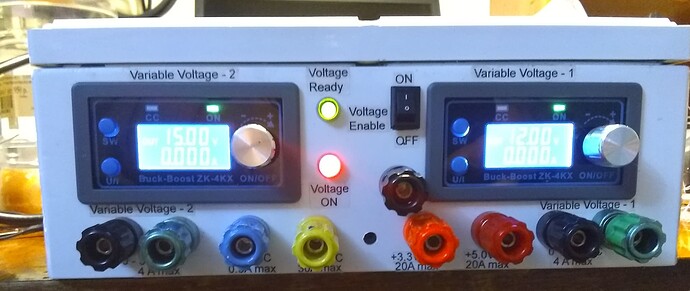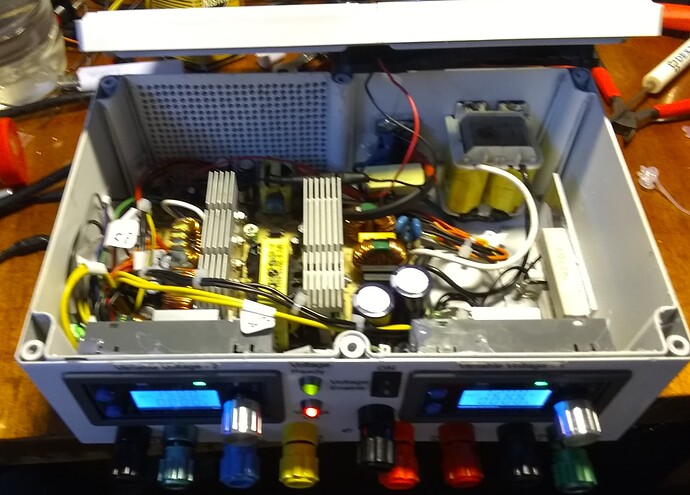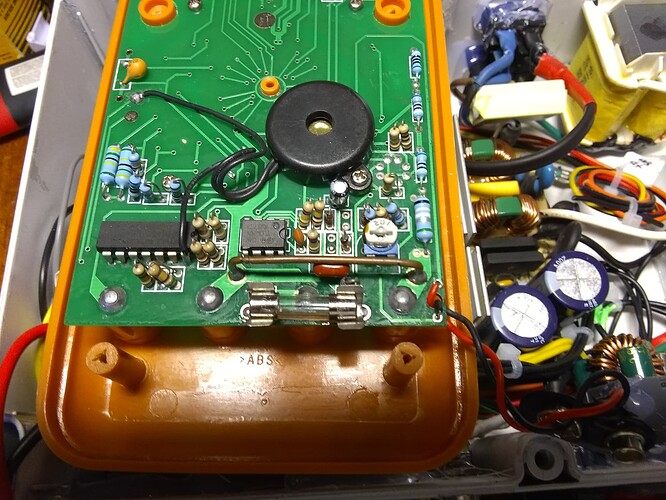Major disaster.
While trying to calibrate the various voltages and currents on the supply, I ran into the problem of, (seemingly), significantly different values between more than one of my multimeters, as well as calculated values compared to actual values.
After trying a number of different things, I (finally) had the brain-storm of putting the 'scope I bought on the outputs.
Major, make that read MAJOR, amounts of power supply noise on all the outputs to the tune of fractions of a volt!
200+ millivolts, (> 0.2 volts), of noise peak-to-peak is GARBAGE!
Bzzzzzt!
We’re sorry but your answer MUST be in the form of a question. (But thanks for playing!)
Conclusion:
The fancy Cooler Master ATX power supply I was basing this entire project on is, in a word, trash. Or, spare parts.
I found another ATX supply with a, (ahem!), great high-end brand name, (Power Man!!), that I dropped onto my ATX supply tester, (to start it and give it a load), and I placed the 'scope across the +12, +5, +3.3 (etc) voltages and the noise was in the microvolt range - thousandths of a volt.
You may ask why didn’t I do that with the previous supply prior to entirely building it out?
Aside from “hindsight is always 20/20”, I didn’t have the 'scope available to test with as my original kit-scope spontaneously self-destructed a couple of weeks after I bought it, (a known defect for a certain production series of the DSO138 based on a defective chip - and I just happened to get one of those old ones), and I had to wait for the replacement kit to arrive.
Result:
-
I now have to completely disassemble and rebuild with a different power supply PCB.
-
The PCB is sufficiently different so I will have to re-drill, move things around, and rebuild.
-
This supply is a dual-voltage supply, capable of using either 110v or 220v mains power, which is a good thing. However! That also means that I have to change the rear-panel layout to accommodate the voltage selector slide-switch.
It’s like Chutes and Ladders where one of the spots on the game board, just prior to winning, is a “chute” that takes you back to the beginning and you have to start all over again.
Errrr!




